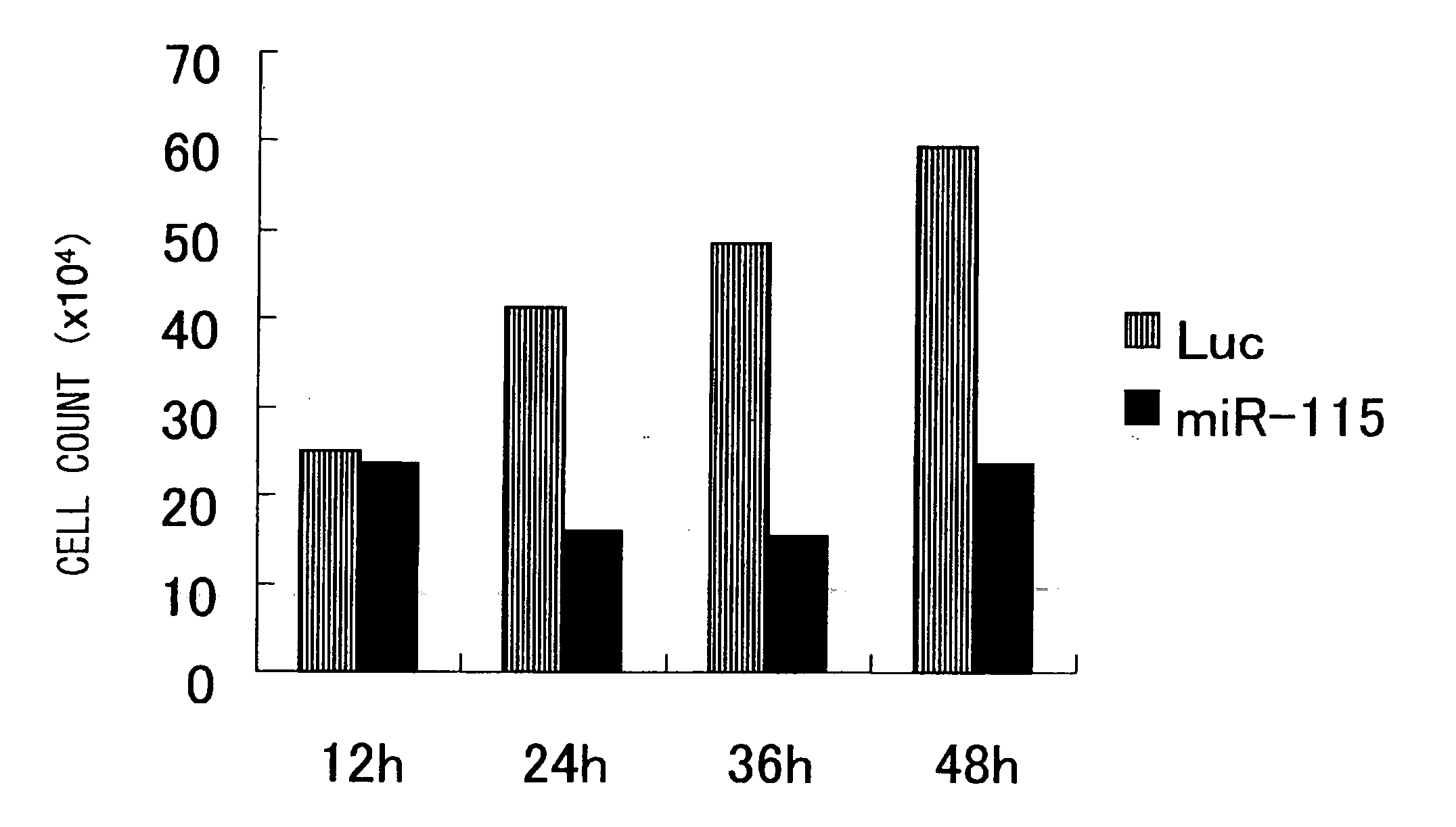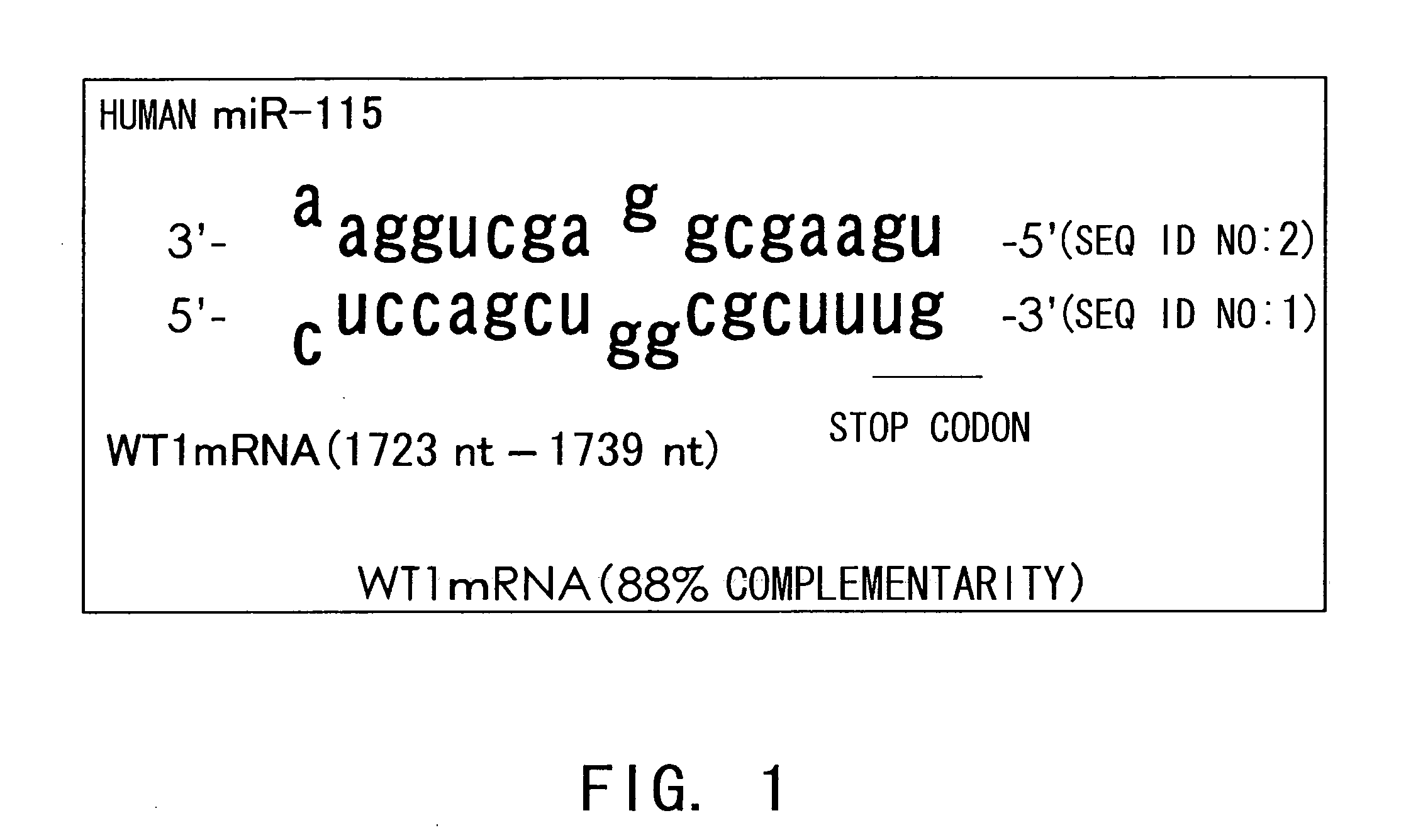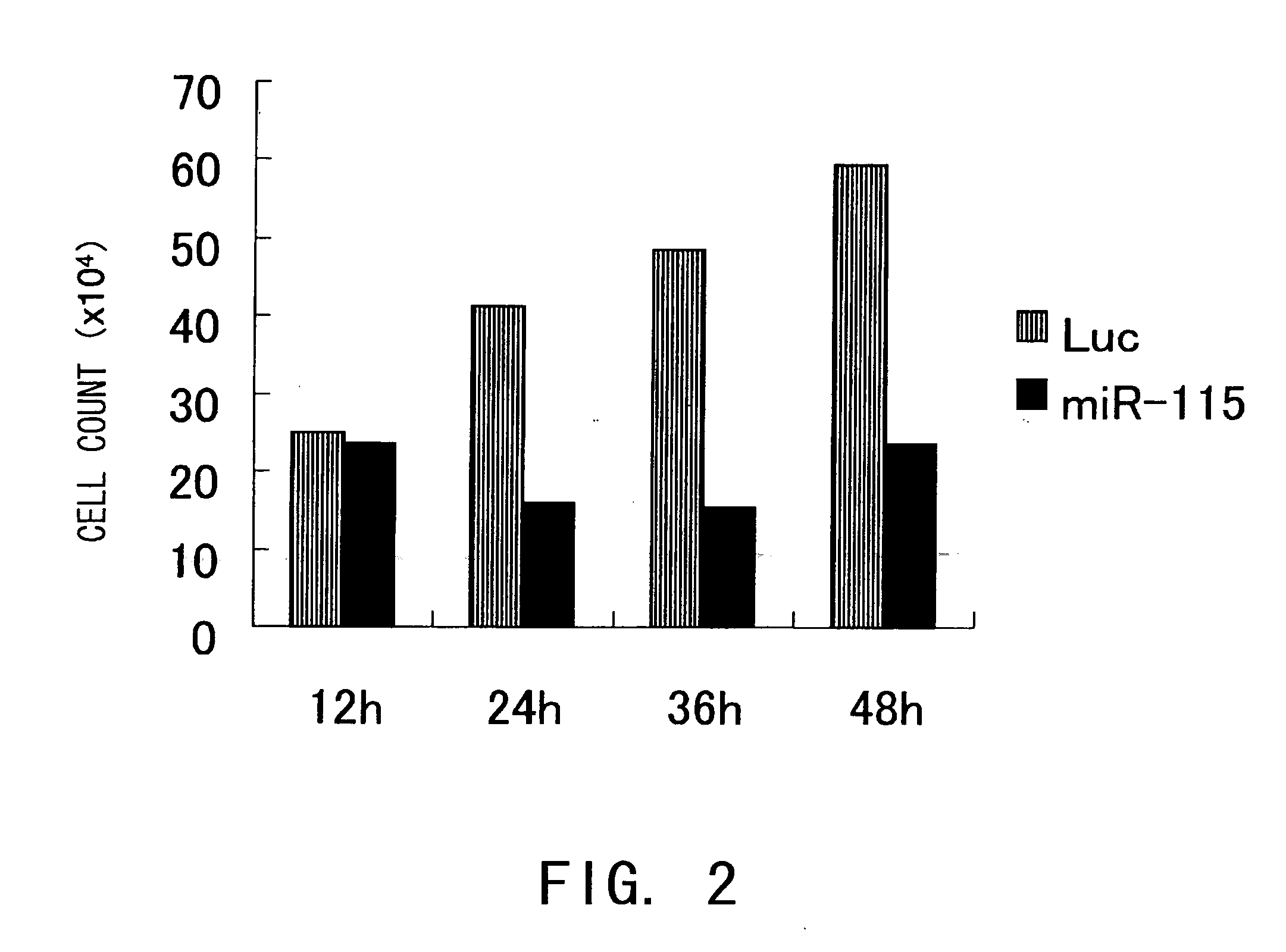Micro Rna Inhibiting the Expression of Wt1 Gene and Utilization of the Same
a technology of wt1 gene and microrna, which is applied in the field of suppressing microrna, can solve the problems of difficult identification of target microrna, and achieve the effects of suppressing cell growth, and efficient suppressing the expression of wt1 gen
- Summary
- Abstract
- Description
- Claims
- Application Information
AI Technical Summary
Benefits of technology
Problems solved by technology
Method used
Image
Examples
example 1
Selection of microRNA
[0059] A database (NCBI GenBank) was searched for potential microRNAs targeting the sequence immediately before the stop codon and up to the 3′-UTR of the WT1 mRNA. MicroRNA (miR) 115 was selected as a candidate.
example 2
Preparation of microRNA
[0060] RNAs were custom-synthesized by Japan Bio Service (JBioS). The RNAs were dissolved in RNase-free water at a concentration of 100 μM. The solutions were aliquoted, and frozen and stored at −80° C. prior to use. The sequences of the synthesized RNAs are shown below.
mir-115:5′ -uga agc gga gcu gga a-3′(SEQ ID NO: 2)Luciferase AS:5′ -ucg aag uau ucc gcg uac guu-3′(SEQ ID NO: 4)
example 3
Growth Suppression of AZ-521 Cells by miR-115
[0061] Cells of the gastric cancer cell line AZ-521 that expresses the WT1 gene at high levels were cultured in Dulbecco's Modified Medium (DMEM) containing 10% FBS. The cells were treated with the microRNA by the following procedure. The AZ-521 cells were trypsinized and adjusted to 1.2×105 cells / 2 ml. Then, the cells were plated in 6-well plates. After 24 hours, the RNA (final conc. 2 μM) was introduced into the cells using RNAi Fect (QIAGEN). The cell count was determined using a cytometer after trypsinization.
[0062] When AZ-521 cells were treated with miR-115 (final conc. 2 μM), the growth of AZ-521 cells was significantly suppressed as compared with control RNA (FIG. 2). Next, AZ-521 cells were treated for 48 hours with 0.5, 1.0, and 2.0 μM miR-115, and the cell growth-suppressing effect of miR-115 was analyzed. The effect was found to be dependent on the miR- 115 concentration (FIG. 3).
PUM
| Property | Measurement | Unit |
|---|---|---|
| concentration | aaaaa | aaaaa |
| structures | aaaaa | aaaaa |
| length | aaaaa | aaaaa |
Abstract
Description
Claims
Application Information
 Login to View More
Login to View More - R&D
- Intellectual Property
- Life Sciences
- Materials
- Tech Scout
- Unparalleled Data Quality
- Higher Quality Content
- 60% Fewer Hallucinations
Browse by: Latest US Patents, China's latest patents, Technical Efficacy Thesaurus, Application Domain, Technology Topic, Popular Technical Reports.
© 2025 PatSnap. All rights reserved.Legal|Privacy policy|Modern Slavery Act Transparency Statement|Sitemap|About US| Contact US: help@patsnap.com



